Estimated reading time: 13min
They say that to start a business you have to start by having an idea , and this is often the main sticking point for aspiring entrepreneurs.
This is partly true, but in fact there are ideas all the time. There are those that we think of when encountering a problem, those that come under our noses while browsing the internet, those that a friend suggests to us in a late-night conversation... The most important thing is to be in the right place. mindset to recognize these opportunities, consider them and study them in detail.
In our case, there were many ideas before finding a promising one and validating it, here's how it happened.
1. The idea
1.1. A favorable breeding ground
To have the idea , the most important thing for me is to be in a good position to recognize it when it arrives and to want to make it come true.

Photo taken near our home in Redondo Beach
In December 2021, we have already been in California for 5 years and are immersed in the American entrepreneurial spirit. Without going into its disadvantages (there are some…), the desire to create a business is everywhere and fuels the famous American dream.
On television, general public shows sometimes go very far in technical analyses: we often watched Shark Tank where young companies make fundraising pitches , and The Profit where Marcus Lemonis turns around bankrupt brands by detailing and explaining his decisions.

Marcus Lemonis
In our circle, several people have started out on their own or have a side-business , that is to say their own business alongside their work. Others have impressive stories of starting a dropshipping business (direct reselling of products, often through Amazon). These people are the first to sincerely encourage you to get started too, especially when you are at least qualified and resourceful.
The environment, seeing people who don't seem to be better than us succeed, all that makes us also think about starting our own business. I would add that working completely independently from home has reinforced the idea that we are capable of it.
The idea of dropshipping from Brazil (where my wife and co-founder is from) came up several times on our dining room table but we never managed to validate it. The desire to program a website or an application has arisen several times but has always stopped somewhere between the simple “why not”, the reservation of the domain name or a few lines of code. One of my projects, www.bookmakerz.com went a little further but that's another story.
Little by little and partly unconsciously, we put together the checklist for the business we want to create:
- Manufacturing a physical product : not a digital company or dropshipping , we wanted machines, assemble ourselves, industrialize our processes and ultimately recruit
- Eco-responsible approach : out of the question of launching a polluting product or one manufactured in large quantities using a lot of energy
- Business in France : to return to part of our family and proudly express the social and ecological values that were close to our hearts (more difficult in the United States or even Brazil)
We are ready.
1.2. Triggering events
Our idea search timeline essentially accelerated in August 2021 when my wife lost her visa and along with her job. Due to the effect of Covid-19, the Trump administration and the lack of support from the HR managers at my work, the renewal of his L2 visa found itself indefinitely suspended.
We studied several options but the idea ended up coming in December 2021 on the occasion of the 5th anniversary of our marriage and our wooden wedding anniversary.
To compensate for a somewhat disrupted wax wedding and a difficult situation, I want to mark the occasion with an original and personal wooden gift.
A product came up regularly and in several forms during my research: wooden topographical maps .

Selection of medium quality wooden topographic maps
As a gift, it's interesting because it has customization options and looks like a gift we received and displayed in our home (the star map on our wedding day). And then personally I have always really liked maps, my wife has long criticized me for having spent more time drawing a detailed map guide for the guests than actually preparing this famous wedding.
What stops me from buying one is the relatively high price for the quality offered: the coarseness of the wood, the burn marks and the manufacturing in China discourage me.
On the other hand, market prices and the large number of companies present make us think about ways to correct these defects.
1.3. The attraction
Soon enough, this idea checks all the boxes and more.
First of all, it's a physical product that we think we can assemble ourselves. Certainly, there is the need to use a cutting machine (milling machine or laser) but my wife and I have the necessary experience for this.
Then, the design requires geographical data that is most of the time freely accessible and I really like the idea of having to program 3D cartographic models.
Then wood is the natural material par excellence, and with some efforts in terms of supplies we should be able to make it an eco-responsible product. It's an anecdote, but my grandfather was a carpenter and to think that I too would work with the same material tells us that the planets are aligning.
The possibilities for diversification are also important: with a cutting machine and a supply of wood, we can develop products that are different and complementary to the topographical map.
Finally, being able to manufacture and market a product ourselves that we simply find “beautiful” comes very close to the definition of professional happiness.
We are therefore following this lead and beginning its validation from commercial, technical and financial points of view. In the new year we have already decided that whatever happens, we will return to France and launch our business in 2021.
2. Market validation
2.1. Quantitative study
I first analyze the market like a case study for consultants and with a few simple questions:
- Who are the actors?
- Where are they located?
- What are their differentiating factors?
- What is the market price?
I list all the companies providing topographical maps, noting each time their characteristics: customizable or not, type of material and cutting process used, level of detail, dimensions. I also carry out a more subjective study on the quality of the products and finally note the prices.
The first results are interesting:
- There are more than a dozen companies making this type of product: most in the United States (often subcontracting to China), my favorite in Australia and another in England
- There is no company producing this type of product in France
This means that there is a significant market for the product and that it is probably underexploited in France. At the price levels practiced for a natural product and illustrating geographical regions, local production is a key success factor.
At the same time, we are looking at the market more generally, especially in the post-pandemic context. Whether in terms of interior decoration, wooden products or online sales, all the indicators are clearly green and we are not delaying.
2.2. Price study and qualitative study
For the prices, my intuition is that they essentially depend on the size of the painting and therefore always in the same document I note the surfaces of the works. I derive a price/area matrix which allows me to define the starting prices for our products.

Matrix for studying the price of topographical tables on the market
To create this type of graph, I used a cloud of XY points on Microsoft Excel and added the data competitor by competitor in order to have a curve linking the points. I'll happily share the source file if anyone wants to reuse it.
I take this opportunity to take notes on user comments: the main problems are linked to impacts during transport and the unpleasant surprise of seeing a “made in China” label.
2.3 Detailed study of one of the actors
A lot of companies in a market is rather a sign that there are a lot of sales, but most of the players identified are small and it is difficult to quantify the expected sales levels.
I search through several means on the internet for turnover information on companies, I avoid generic paid reports, and ultimately I have very few concrete indicators.
And then I notice that key data is available on ETSY : the total number of sales, details of the products sold, dated user comments related to the product sold.
I quickly program a data vacuum in Python and compile sales by product. For the selected company, my luck is that they have a very large catalog with certain poorly sold products: each time someone comments on one of these, it gives a time marker which allows us to readjust the entire chronology of the sales.

Evolution of a competitor's sales on ETSY
I thus obtain a realistic sales trend and a target turnover that I can subsequently justify when presenting the project.
This step is ultra-important and I recommend it to anyone carrying out market research. In addition to providing quantitative confidence in the project's chances of success, it allows me to record very detailed information on this competitor: its best-selling regions and products, recurring comments, etc.
There are tutorials on the internet for sucking up ETSY sales but none are 100% functional. Given the relative legality of the process I will not share my tool but remain available to answer questions about the process.
2.4 Conclusion and retrospective reflections
At the start of 2021, this market analysis reinforces our idea that the chosen product has a potential audience and a future in France.
In retrospect, and after having learned a lot more about marketing and product launches, notably thanks to the Germinal Antichambre training courses, I realize that a few additional steps would have been beneficial.
In particular, we could have pre-launched the product, been more incisive in questioning the French market by participating in online conversations, and quite simply more present.
I think we lost a few weeks or even months on the launch by skipping these steps, but given our workload at that time I don't know if we really could have done more.
For reference here is a link to the Germinal antechamber which offers the most comprehensive courses I have found. I was lucky enough to benefit from it for free as a beta tester and also encourage you to follow their employees individually on LinkedIn, they give a lot of information.

https://antichambre.germinal.io
3. Technical validation
We identify 2 potential obstacles to manufacturing the product and we make sure to address them before moving forward with the project:
- Design of topographic maps
- Cutting wood and assembling it
3.1. Technical design
Being comfortable with programming allows me to address the subject head on and get down to drawing a topographical contour map as quickly as possible.
Very quickly, the Open Source satellite data from NASA's SRTM mission appeared to be the ideal starting point: by having raw, free and relatively precise data we can do with it what we want without depending on tool transformations. or third party services.
I eventually realize that my geomatics skills are insufficient to understand all the subjects. After some research for technical online courses, I found Earthlab .

This site offers a set of free modules and tutorials which are exceptional in their quality and level of explanation. Following them allows me to familiarize myself with essential notions of reprojection in different spatial coordinate frames ( CRS ), frames ( rasters ) and sometimes simply geometry.
Below are the 2 resources I used the most:
- https://www.earthdatascience.org/courses/use-data-open-source-python/
- https://www.earthdatascience.org/tutorials/visualize-digital-elevation-model-contours-matplotlib/
My first renderings of Reunion Island (which has a very recognizable relief) allow me to validate the theoretical feasibility of the project.

Elevation data from Reunion Island processed in Python
To design the cutting plans and maps within a reasonable time frame, however, I need to go further. This is the perfect opportunity to re-use Blender , a fantastic 3D design software. It's been 10 years since I last opened it, but there was a time when I spent a lot of time creating scenes and participating in competitions. There is even somewhere on Dailymotion a short film that I made in 2007 with friends.
In short, working with Blender again is another sign that this project is going in the right direction and I quickly found the resources allowing me to directly manipulate the satellite elevation data. The BlenderGIS plugin ( https://github.com/domlysz/BlenderGIS ) allows you to import this data and the 2 tutorials below were of great help (and very inspiring in terms of artistic mapping):
These first tests allow me to validate the design part of the tables with confidence and a lot of pleasure despite an underpowered PC. The technique will evolve later but the fundamentals are there.

3.2. Cutting and assembly
We decide to opt for laser cutting for the finesse of the final result and the production time in relation to the cost of the machine.
We followed many online tutorials but were unable to do a concrete test (mainly because of covid-19, most courses are closed) before making the decision to take the plunge. We are still reserving physical classes for April which will allow us to react in time in the event of a major problem.
3.3. Conclusion
This first technical feasibility analysis confirms our decision. In hindsight, we think it was the right approach.
4. Financial validation
The most important step is for the end of this publication but it was started first and followed in parallel with the others.
Our initial hypothesis is that the price of the paintings encountered makes their manufacture in France competitive. We therefore study the costs, the initial investments and define the profitability thresholds.
4.1 Material investments
One of our main criteria for launching the entrepreneurial project is to be able to finance it with equity with the savings made by working in the United States. This allows us to frame our budget from the start.
We will subsequently realize that it is easy and preferable to use professional credit for these initial material purchases.
In our case, the main item of material investment is the laser cutting machine. It is difficult to find precise prices online for this type of industrial equipment and there are very different ranges. Overall, we retain the idea that between €10k and €20k we will be able to find a machine with the desired technical characteristics (mainly in terms of dimensions of the cutting area).
By adding the costs of furniture and IT, stock and start-up costs plus some provisions we remain within the forecast budget without any major risk of overrun.
All these assumptions are recorded and regularly updated in an Excel file.
Subsequently, we will produce a more formal forecast and financing plan but for the start it is sufficient.
4.2 Production costs
Calculating returns on investments, production costs, to be completely transparent, this has been my job for years in aeronautics.
By having the opportunity to make these calculations for my own project, I am building a modular Excel file which allows me to easily change the hypotheses throughout the project.
The diagram below illustrates how the file works, both complex and simple: by keeping separate modules, any modification makes it possible to directly measure the impacts without effort.

Illustration of project development key file architecture
For example, if after searching for wood suppliers we find a new one who offers sheets of different dimensions and prices. We just need to enter the data in the “ Wood selection ” tab and the modifications are automatically reflected in the other tabs up to the financial analyses: direct costs can be impacted both by the price change and the consequences of the change of dimensions (for a larger sheet, less manual operations for example).
Thanks to this file we are moving forward in the search for suppliers, the recording of initial hypotheses and their evolution. It does not replace a forecast or income statement, but it makes their preparation easier, especially when the data changes regularly.
For those who are interested, I can make a version of this Excel file available.4.3 Profitability thresholds
Launching a product on a market where it does not yet exist is rather positive, but it makes sales forecasts more difficult. To avoid starting on too unrealistic bases in one direction or the other, we look at the project on the basis of profitability thresholds: from what volume of monthly sales we will be able to pay the fixed costs, remunerate ourselves, recruit employees, etc.
We compare these thresholds with production capacities, to be sure that by growing we will be able to free up margin. The graph below illustrates the result of the analysis (and is part of our Excel file so it evolves in real time).

The sales levels associated with the two balance points seem reasonable to us in view of what market players are visibly achieving.
5. Continued
With these elements in hand we are convinced that we have found the long-awaited opportunity to create our business. There would certainly be a need to refine the hypotheses and adjust our models, but the essential thing is there. And above all, we take great pleasure in developing the project and it becomes almost impossible to go back.
To get started definitively, we need to start preparing for our return to France: on March 2, 2021, we buy our tickets for a simple return .
I will tell the rest in a second part.


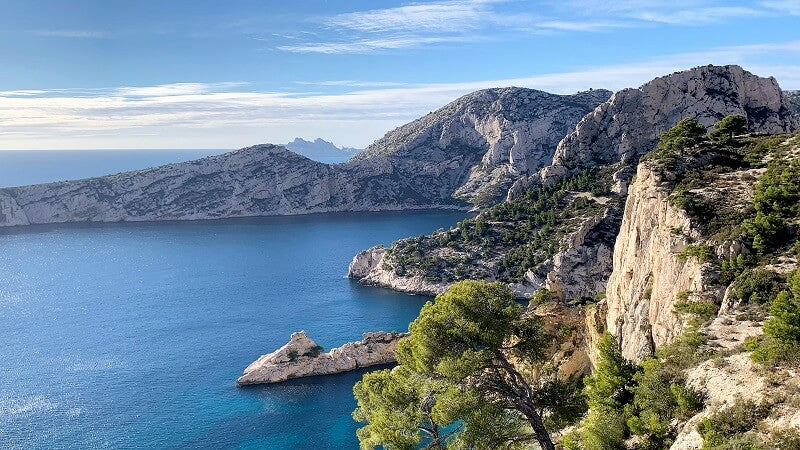
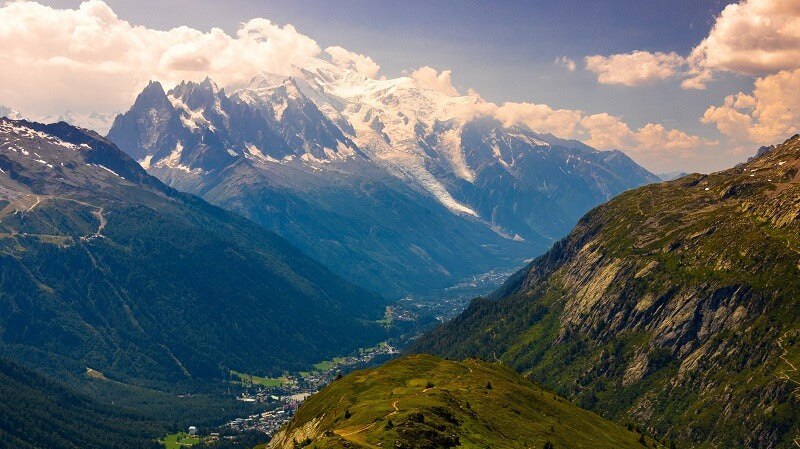
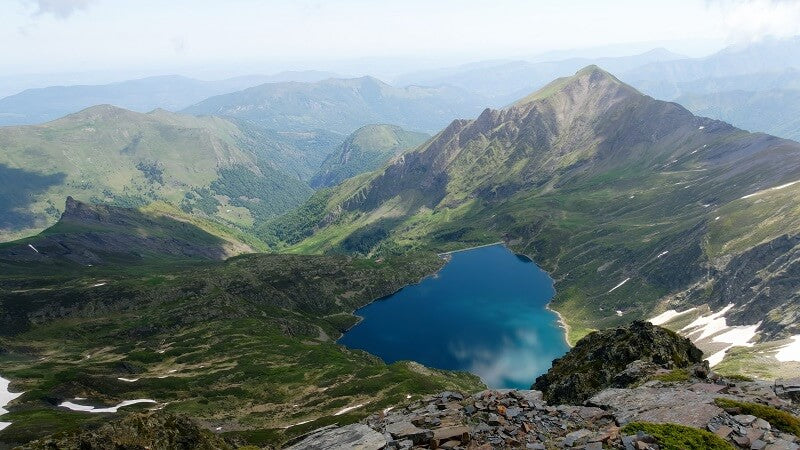
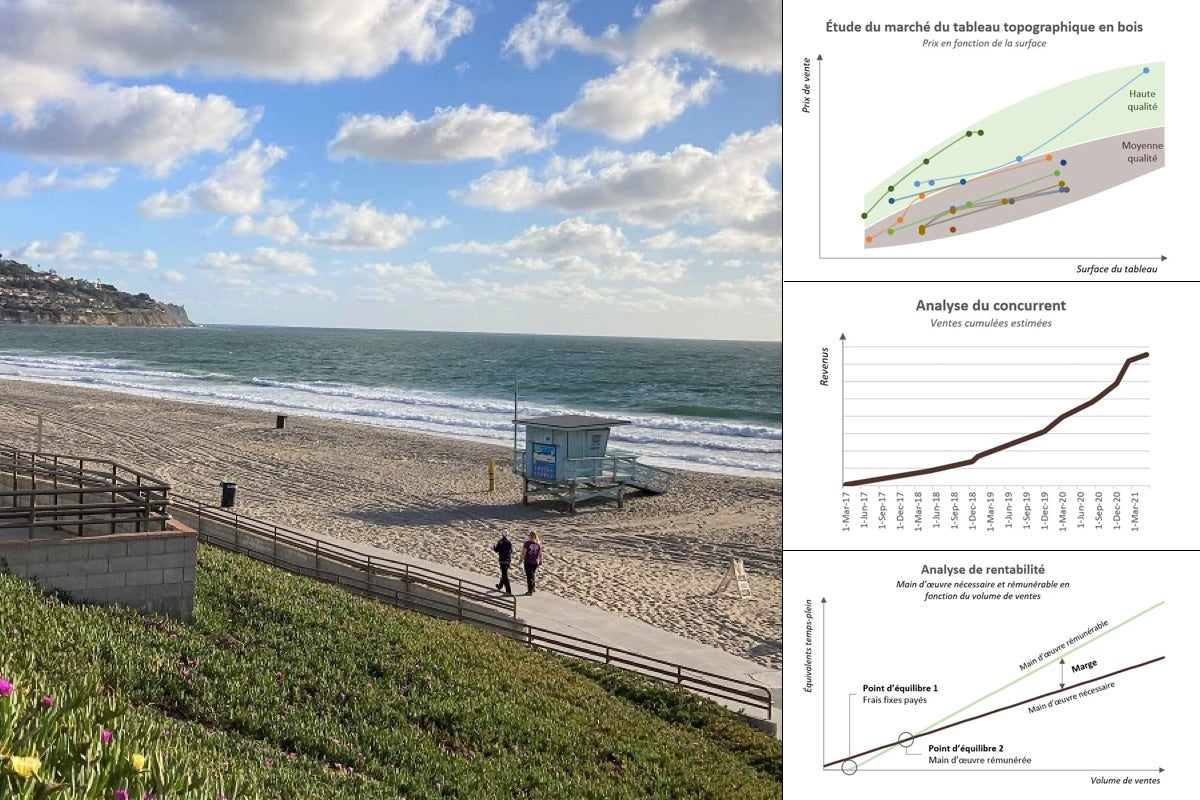
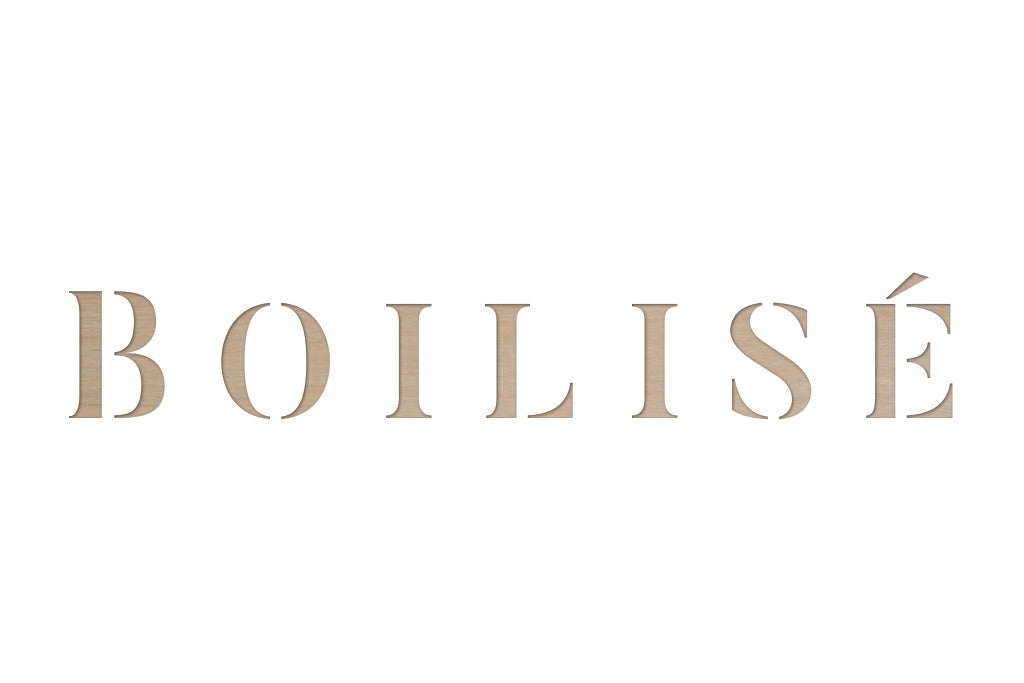
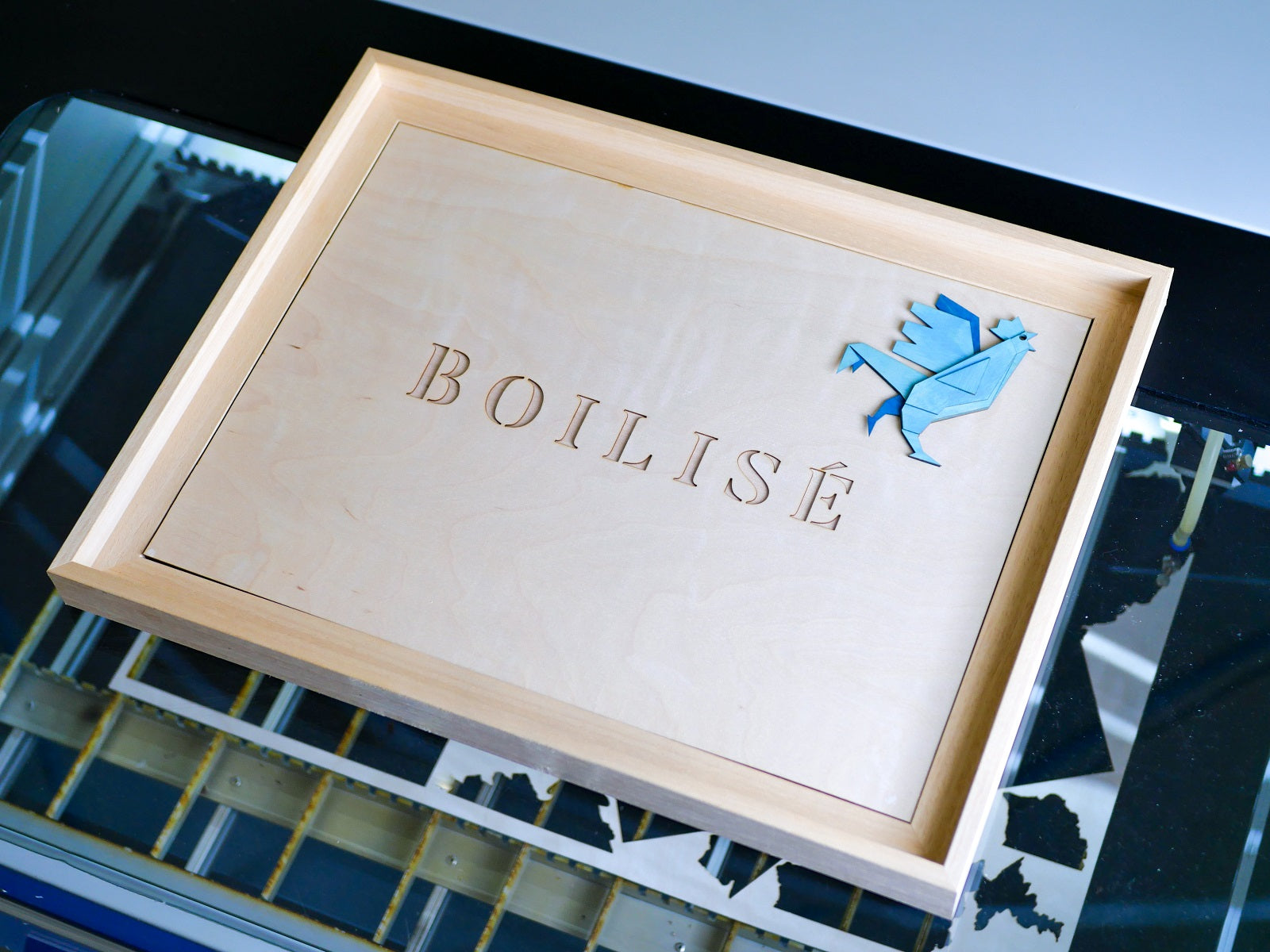
Leave a comment
All comments are moderated before being published.
This site is protected by hCaptcha and the hCaptcha Privacy Policy and Terms of Service apply.